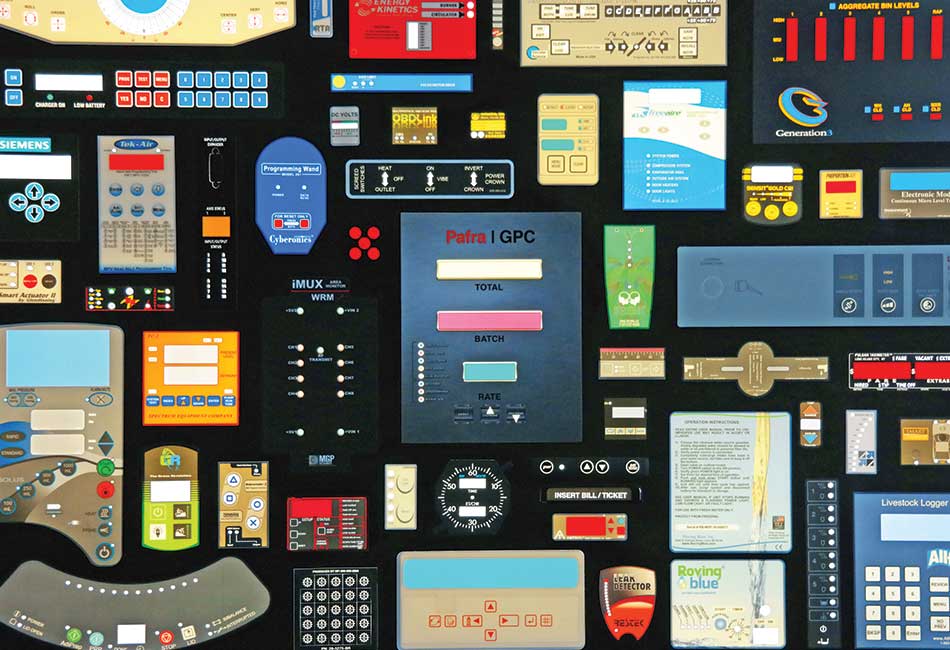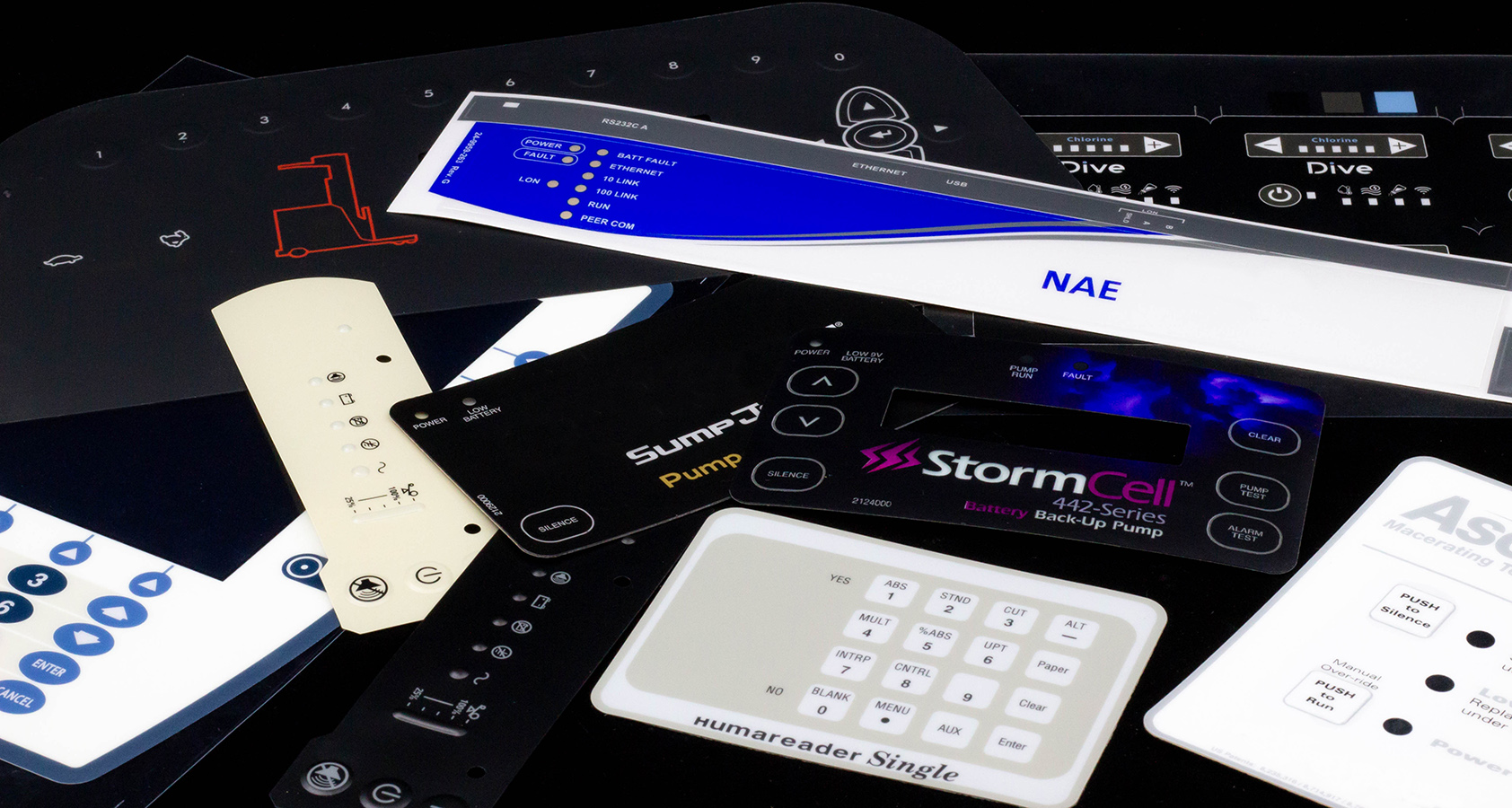Top Aspects to Consider When Designing Custom Graphic Overlays for Equipment
Understanding Just How Graphic Overlays Job to Boost Your Creative Jobs
Graphic overlays offer as a pivotal component in the realm of innovative jobs, boosting both aesthetic interaction and target market engagement. The successful combination of these overlays needs cautious consideration of design principles and objectives.
What Are Graphic Overlays?
Graphic overlays are aesthetic components that are positioned on top of a base picture or user interface to enhance interaction and customer experience. They serve various functions, including providing additional information, directing user communication, and boosting visual appeal. Usual applications of visuals overlays can be found in electronic user interfaces, advertising, and educational materials.

Graphic overlays are typically created using layout software program, enabling designers to manipulate shade, openness, and size to accomplish the wanted impact. Understanding how to successfully implement visuals overlays is critical for developers intending to boost their creative projects.

Benefits of Utilizing Graphic Overlays
Using graphic overlays can dramatically enhance the performance of aesthetic interaction across various tools. One of the main benefits is the capacity to convey intricate info succinctly. By layering graphics, text, and pictures, overlays help with the discussion of data in a more absorbable layout, making it much easier for audiences to comprehend vital principles swiftly.
In addition, graphic overlays can increase visual allure, attracting attention to certain components within a design. This is specifically useful in advertising and marketing and marketing, where catching the visitor's passion is paramount. The strategic use colors, shapes, and typography in overlays can develop a interesting and natural aesthetic narrative, boosting brand name recognition.
In addition, graphic overlays provide adaptability in style. They enable developers to adjust content for different platforms without starting from scratch, guaranteeing consistency across various networks. This versatility is crucial in today's electronic landscape, where material must be enhanced for diverse devices and styles.
Kinds of Graphic Overlays
When thinking about the different kinds of graphic overlays, it is important to recognize their diverse applications throughout various sectors. Graphic overlays can be categorized largely into 3 types: functional, decorative, and educational.
Useful overlays are developed to boost the functionality of a product. Generally discovered in electronic tools, these overlays frequently provide tactile feedback with increased switches or textured surfaces, boosting customer communication. They can additionally act as a protective layer, protecting the underlying elements from damage.
Attractive overlays concentrate on visual improvement, my review here enabling brand names to share their identity through vivid layouts and custom-made graphics. These overlays are prevalent in packaging, advertising, and point-of-sale materials, where aesthetic allure is critical for drawing in clients.
Informative overlays, on the other hand, are made use of to communicate vital data or directions. They can be seen in applications such as signs, individual handbooks, and training graphics, where quality and readability are paramount.
Each sort of graphic overlay offers an one-of-a-kind objective, adding to the general efficiency of creative jobs while dealing with certain needs within different industries. Recognizing these distinctions is important for picking the ideal overlay for your task.
Ideal Practices for Application
To guarantee the successful execution of graphic overlays, his comment is here it is important to establish a clear understanding of the project's goals and the particular requirements of the end-users. Begin by performing comprehensive study to determine the target market and their choices, as this will certainly inform design options and performance.
Following, develop a detailed plan that outlines the overlay's layout, objective, and assimilation process. This strategy needs to consist of interface considerations, guaranteeing that overlays enhance as opposed to obstruct the individual experience - Graphic Overlays. Preserve and consider the aesthetic hierarchy uniformity in style aspects, such as shade symbols, font styles, and schemes, to advertise brand comprehensibility
Checking is vital; gather comments from a representative example of users to recognize potential concerns and areas for enhancement. Iterate on the style based upon individual input and performance data. In addition, make sure compatibility throughout numerous gadgets and systems to make the most of access.
Tools for Producing Overlays
Developing efficient graphic overlays needs the right devices to convert design ideas into practical applications. Numerous software and platforms are offered, each customized to specific requirements and ability levels.
Adobe Photoshop and Illustrator are market standards, offering considerable abilities for creating and controling overlays. These tools supply advanced attributes such as layer administration, blending modes, and vector graphics, enabling developers to create complex and high-grade overlays.
For those seeking a more user-friendly method, Canva and Figma are excellent options (Graphic Overlays). Canva's user-friendly interface allows customers to produce overlays rapidly making use of pre-designed templates, while Figma facilitates joint layout in real-time, making it suitable for teams
Furthermore, open-source alternatives like GIMP and Inkscape provide durable performances without the linked prices of exclusive software. These devices permit adaptability in style and can suit numerous data styles, guaranteeing compatibility across different systems.

Final Thought
To conclude, visuals overlays work as powerful tools for boosting innovative tasks by giving visual quality, aesthetic charm, and brand uniformity. Their diverse applications, varying from useful to ornamental, highlight their versatility in communication. Sticking to finest techniques and using suitable tools ensures efficient application and optimizes the influence of overlays. By recognizing the fundamental principles and advantages connected with visuals overlays, designers can substantially improve the high quality and effectiveness of their aesthetic interactions.
Graphic overlays offer as a pivotal part in browse around this site the world of imaginative jobs, boosting both visual interaction and target market involvement.Graphic overlays are frequently developed making use of layout software, allowing designers to manipulate size, transparency, and shade to attain the preferred result.Moreover, graphic overlays can increase visual appeal, drawing attention to specific components within a design.In addition, graphic overlays give flexibility in layout.In final thought, graphic overlays offer as powerful devices for enhancing innovative tasks by supplying visual quality, aesthetic allure, and brand uniformity.